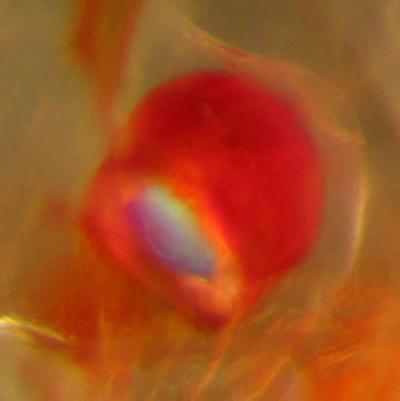New discovery of the phenomenon of underwater luminescence
The phenomenon of glowing in living organisms or bioluminescence is quite common, especially in marine species. We still know that light is produced by chemical reactions in which oxygen molecules play an important role.
In the animal world, these chemical reactions occur in special luminescent cells called photocytes. They focus on complex light bodies in which the intensity of light is regulated by nerve impulses. Light can be adjusted with the support of reflectors, lenses as well as filters. Thus, the organism can adjust the wavelength, diffusion as well as the intensity of the light according to the need. But the exact mechanism behind these processes is still a mystery.
Jenny Krönström - a researcher at the Department of Zoology at the University of Gothenburg has put a piece of the puzzle in place by studying the light bodies of jellyfish, crustaceans and marine fish. In her thesis, she revealed that krill and luminescent crustaceans are equipped with special muscles that regulate light intensity through muscle contraction.
 Muscle regulates light in luminescent molluscs. (Photo: Jenny Kronstrom)
Muscle regulates light in luminescent molluscs. (Photo: Jenny Kronstrom)
Nitrogen oxide is also thought to play an important role in the bioluminescence of mollusks. It is produced in small capillaries that keep the photocyle cells supplied with oxygen along with special closed muscles, called sphincter located at the points where capillaries transport blood to the photocyte cells of krill. Experiments performed on the above agents make the sphincter close or open, showing that when the sphincter opens, the mollusks start to glow, perhaps because the flow of oxidized blood to the photocyte is enhanced.
Because bioluminescence develops independently at different stages in the evolutionary process, different species also develop different methods of regulating and glowing. Jenny Krönström's research has shown that nitrous oxide also has different effects on different species. Living in relatively deep waters, nitrous oxide limits the light reaction in silver axes of Argyropelecus olfersii, while it has the opposite effect, stimulating light reactions in Porichthys notatus.
Biological light is not only useful for the organisms themselves, it plays the same role as biological torches, camouflage measures or means of communication. The substances involved in the chemical luminescent reaction are also useful in modern molecular biology. The discovery of green luminescent protein, which produces green light in jellyfish, brought the 2008 Nobel Prize in chemistry.
- China has successfully performed underwater quantum teleportation for the first time
- The underwater record for 73 days
- Underwater photography techniques make you squint
- Nha Trang: Glowing marine life
- Technology allows people to breathe underwater
- The most frightening prehistoric monster mystery
- Built underwater museum in Africa
- Discover the largest underwater cave on the planet
- Build the world's largest underwater park in Dubai
- How will things change when submarines become underwater carriers?
- Producing canoe diving underwater
- The future underwater city of Japan
 Surprised: Fish that live in the dark ocean still see colors
Surprised: Fish that live in the dark ocean still see colors Japan suddenly caught the creature that caused the earthquake in the legend
Japan suddenly caught the creature that caused the earthquake in the legend A series of gray whale carcasses washed ashore on California's coast
A series of gray whale carcasses washed ashore on California's coast Compare the size of shark species in the world
Compare the size of shark species in the world